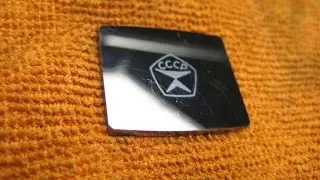How to Display Images from Within a Jar in Java Swing
на канале: vlogize
Discover the best methods to display images stored within a JAR file in your Java Swing applications, ensuring easy distribution as a single JAR file.
---
This video is based on the question https://stackoverflow.com/q/31127/ asked by the user 'jjnguy' ( https://stackoverflow.com/u/2598/ ) and on the answer https://stackoverflow.com/a/45580/ provided by the user 'Tom Hawtin - tackline' ( https://stackoverflow.com/u/4725/ ) at 'Stack Overflow' website. Thanks to these great users and Stackexchange community for their contributions.
Visit these links for original content and any more details, such as alternate solutions, comments, revision history etc. For example, the original title of the Question was: Java Swing: Displaying images from within a Jar
Also, Content (except music) licensed under CC BY-SA https://meta.stackexchange.com/help/l...
The original Question post is licensed under the 'CC BY-SA 3.0' ( https://creativecommons.org/licenses/... ) license, and the original Answer post is licensed under the 'CC BY-SA 3.0' ( https://creativecommons.org/licenses/... ) license.
If anything seems off to you, please feel free to write me at vlogize [AT] gmail [DOT] com.
---
How to Display Images from Within a Jar in Java Swing
When developing Java applications using Swing, you might find that your images display perfectly when running your application in an IDE like Eclipse. However, once you package your application into a JAR file, those images may not display at all. This can be frustrating, especially if your goal is to distribute a single JAR file for ease of use. In this guide, we'll delve into how to display images stored within a JAR file in your Java Swing applications.
The Problem Explained
The issue arises because when you run a Java Swing application directly in your IDE, the paths to resources like images are easily resolved. However, when you switch to a packaged JAR, these paths can become inaccessible. The main concern is how to correctly reference and display an image within your JAR file.
Common Challenges
Image Not Found: In most cases, you might encounter errors that indicate the image could not be found after packaging the JAR.
Classpath Issues: Resources need special handling when being accessed from the JAR classpath, which differs from file paths used in IDEs.
The Solution: Accessing Images in Your JAR File
To display images from within a JAR file, you can utilize ImageIcon along with getClass().getResource(). This approach allows you to load your image easily without needing to extract it physically from the JAR. Here’s how to do it step-by-step:
Prepare Your Image: Make sure your image (myimage.jpeg, for example) is located in the correct directory within your source directory. For example, it might be in the same package as your Java class.
Load the Image Using ImageIcon:
Use the following simple line of code to load the image:
[[See Video to Reveal this Text or Code Snippet]]
getClass().getResource() is a method that looks for resources in the same package as the class from which it's called.
It returns a URL pointing to the resource, which is what ImageIcon requires to create an icon.
Handle Classpath Resources: If your image is not in the same package, you will need to adjust the path accordingly. Here’s an example:
If your structure is like src/images/myimage.jpeg, you can access it by:
[[See Video to Reveal this Text or Code Snippet]]
Starting with a slash indicates that the path is relative to the root of the classpath.
Referencing External Libraries: If you find your image is still inaccessible, you might need to check the documentation for java.net.JarURLConnection which provides more methods to successfully create URLs to Jar content.
Conclusion
By following the steps highlighted above, you can easily embed images within your JAR file and ensure that they display correctly when your application is executed. This method allows for easy distribution of your Java Swing application as a single JAR without needing to manage separate image files.
Quick Recap
Remember to keep images in appropriate directories.
Use getClass().getResource("path_to_image") to load images.
Ensure your resource paths are correctly handled to avoid issues when packaging.
With these guidelines, you are now equipped to resolve image loading issues in your Java Swing projects, ensuring a smoother user experience for your application users.































